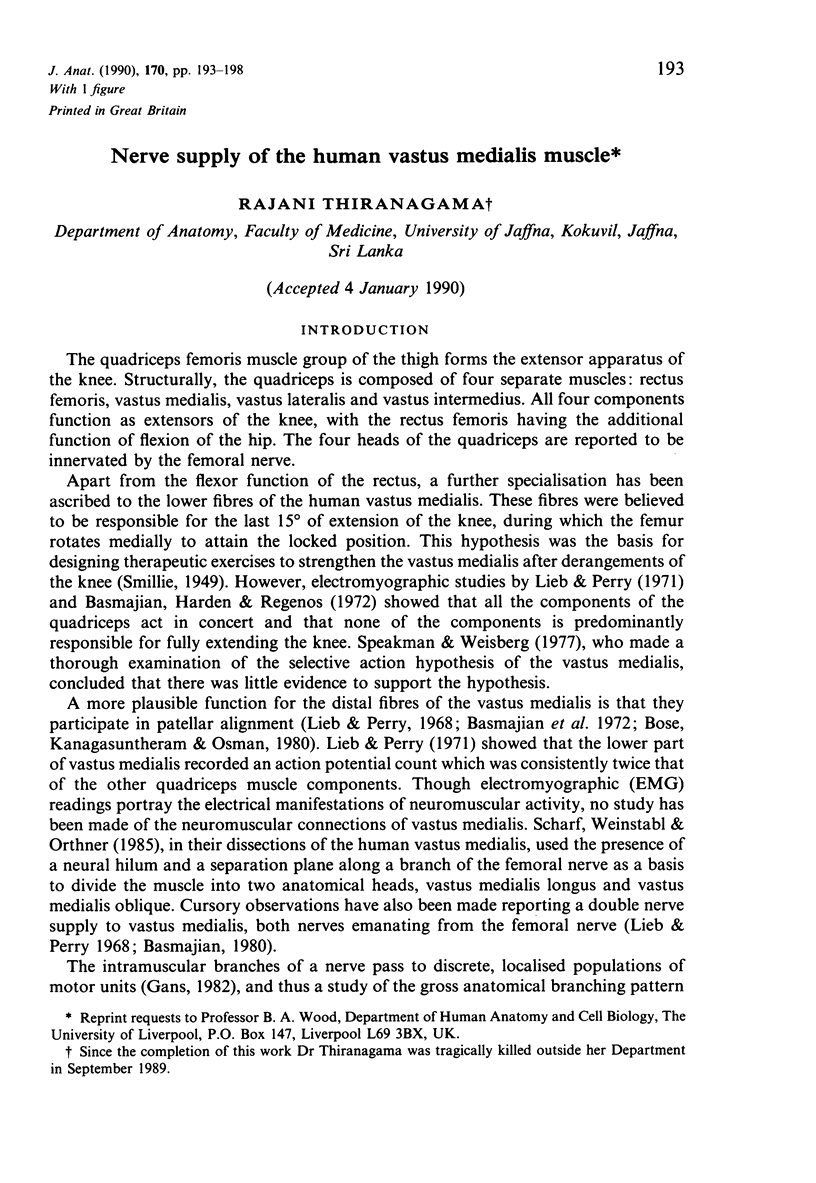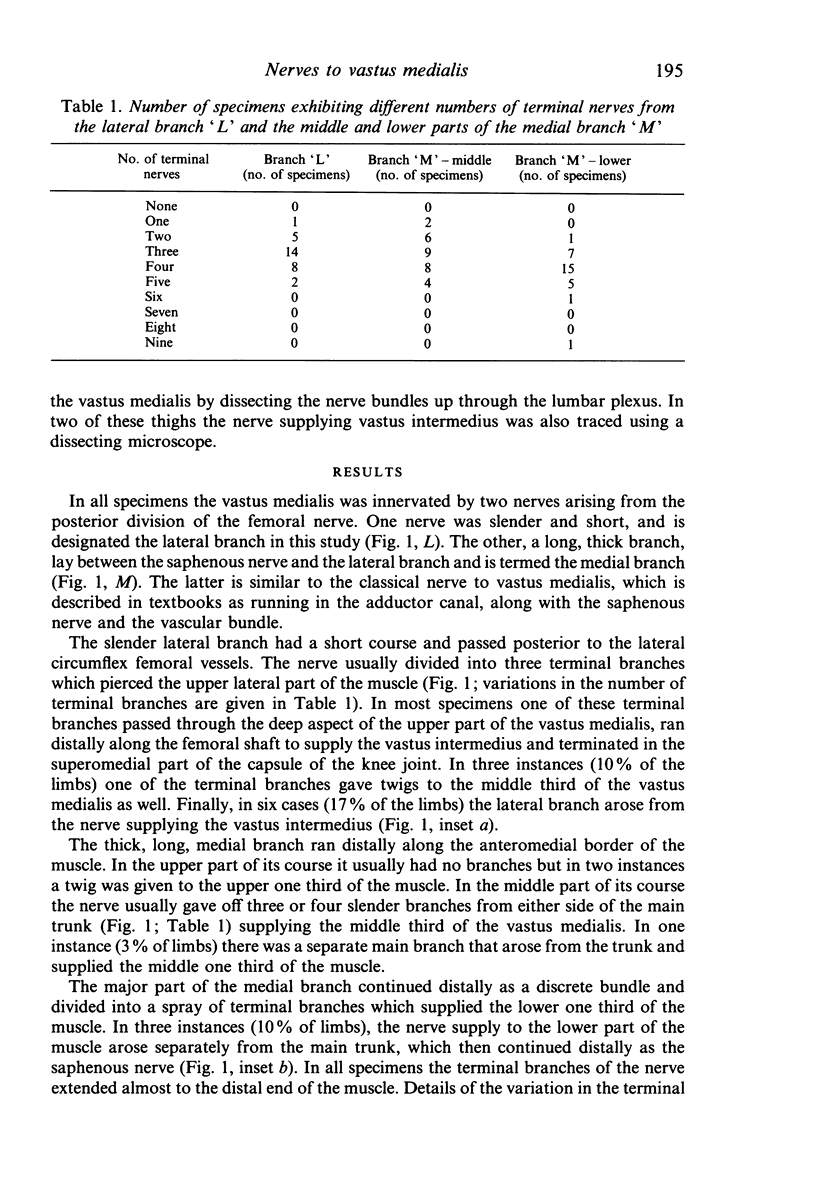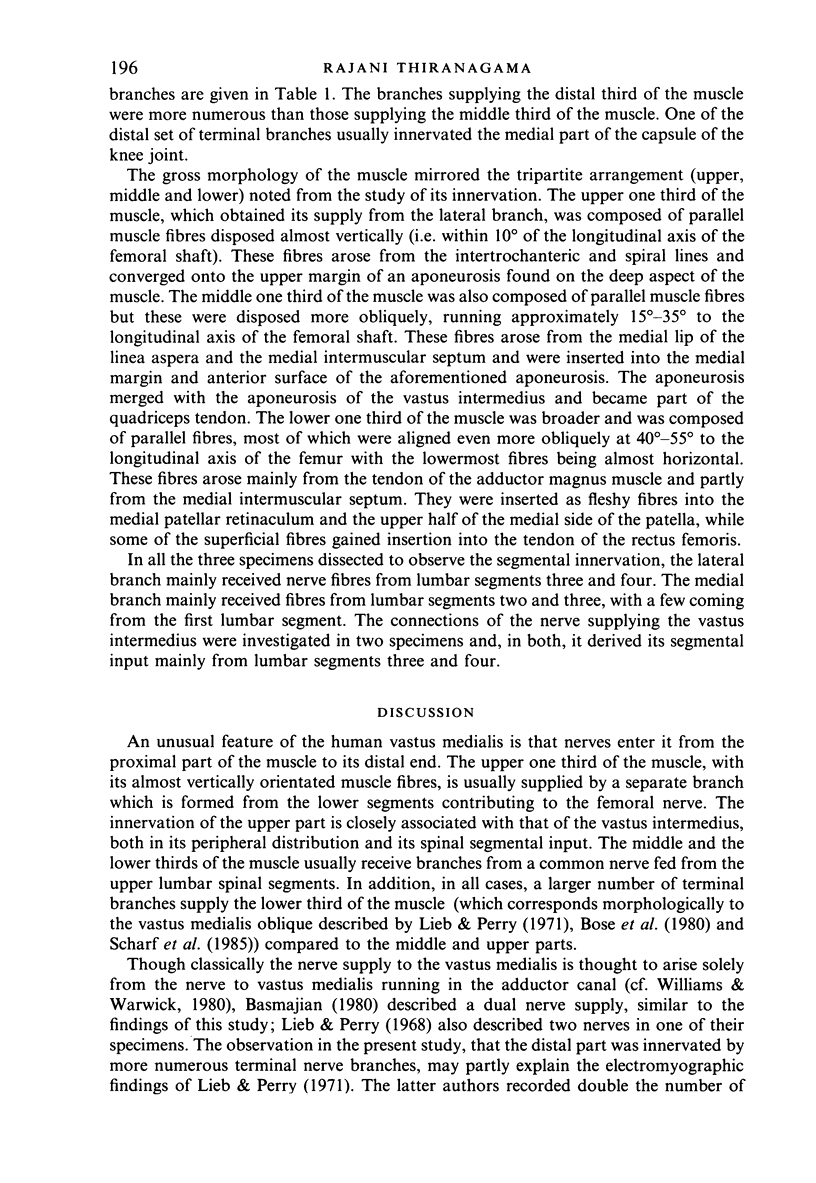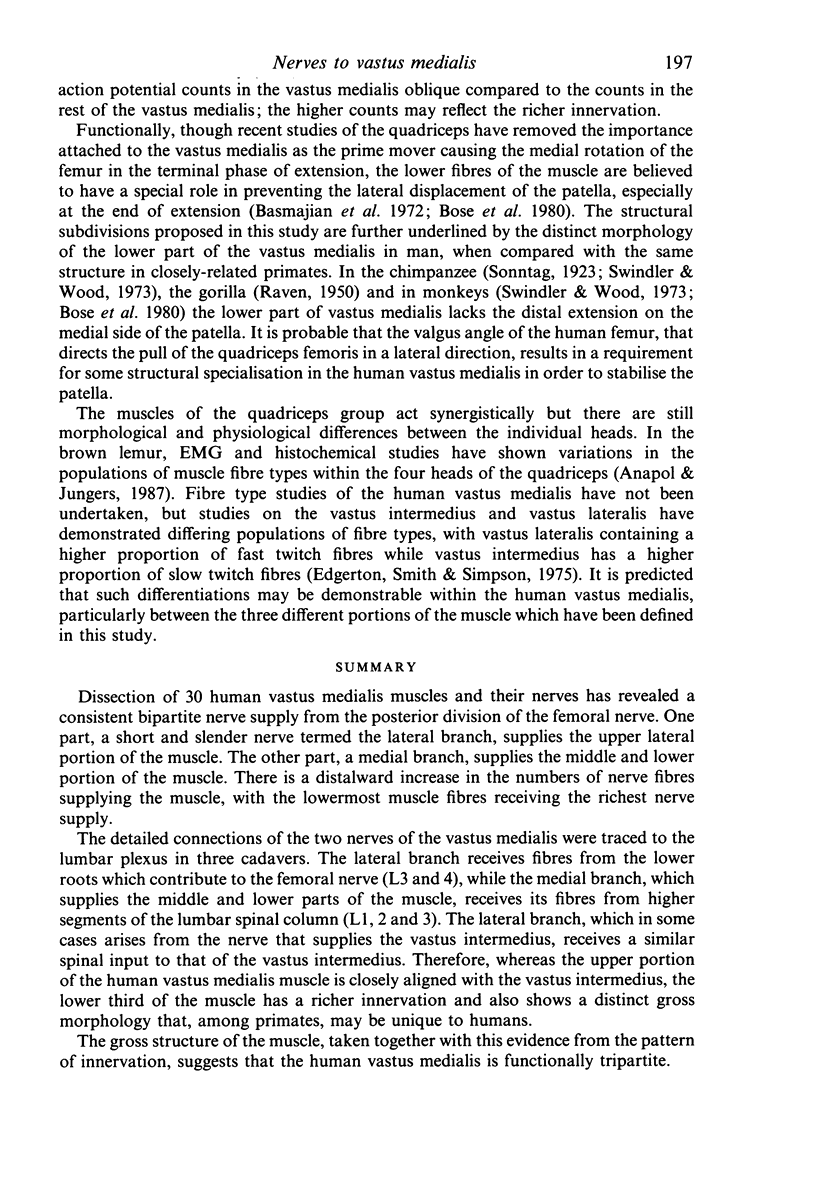Abstract
Dissection of 30 human vastus medialis muscles and their nerves has revealed a consistent bipartite nerve supply from the posterior division of the femoral nerve. One part, a short and slender nerve termed the lateral branch, supplies the upper lateral portion of the muscle. The other part, a medial branch, supplies the middle and lower portion of the muscle. There is a distalward increase in the numbers of nerve fibres supplying the muscle, with the lowermost muscle fibres receiving the richest nerve supply. The detailed connections of the two nerves of the vastus medialis were traced to the lumbar plexus in three cadavers. The lateral branch receives fibres from the lower roots which contribute to the femoral nerve (L3 and 4), while the medial branch, which supplies the middle and lower parts of the muscle, receives its fibres from higher segments of the lumbar spinal column (L1, 2 and 3). The lateral branch, which in some cases arises from the nerve that supplies the vastus intermedius, receives a similar spinal input to that of the vastus intermedius. Therefore, whereas the upper portion of the human vastus medialis muscle is closely aligned with the vastus intermedius, the lower third of the muscle has a richer innervation and also shows a distinct gross morphology that, among primates, may be unique to humans. The gross structure of the muscle, taken together with this evidence from the pattern of innervation, suggests that the human vastus medialis is functionally tripartite.
Full text
PDF





Selected References
These references are in PubMed. This may not be the complete list of references from this article.
- Anapol F. C., Jungers W. L. Telemetered electromyography of the fast and slow extensors of the leg of the brown lemur (Lemur fulvus). J Exp Biol. 1987 Jul;130:341–358. doi: 10.1242/jeb.130.1.341. [DOI] [PubMed] [Google Scholar]
- Basmajian J. V., Harden T. P., Regenos E. M. Integrated actions of the four heads of quadriceps femoris: an electromyographic study. Anat Rec. 1972 Jan;172(1):15–20. doi: 10.1002/ar.1091720102. [DOI] [PubMed] [Google Scholar]
- Edgerton V. R., Smith J. L., Simpson D. R. Muscle fibre type populations of human leg muscles. Histochem J. 1975 May;7(3):259–266. doi: 10.1007/BF01003594. [DOI] [PubMed] [Google Scholar]
- Gans C. Fiber architecture and muscle function. Exerc Sport Sci Rev. 1982;10:160–207. [PubMed] [Google Scholar]
- Lieb F. J., Perry J. Quadriceps function. An anatomical and mechanical study using amputated limbs. J Bone Joint Surg Am. 1968 Dec;50(8):1535–1548. [PubMed] [Google Scholar]
- Lieb F. J., Perry J. Quadriceps function. An electromyographic study under isometric conditions. J Bone Joint Surg Am. 1971 Jun;53(4):749–758. [PubMed] [Google Scholar]
- Scharf W., Weinstabl R., Orthner E. Anatomische Unterscheidung und klinische Bedeutung zweier verschiedener Anteile des Musculus vastus medialis. Acta Anat (Basel) 1985;123(2):108–111. [PubMed] [Google Scholar]
- Speakman H. G., Weisberg J. The vastus medialis controversy. Physiotherapy. 1977 Aug;63(8):249–254. [PubMed] [Google Scholar]


